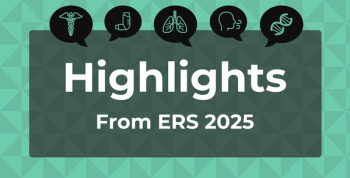
Annual Breast Cancer Screening Should Begin at Age 40 Years, Study Finds
Modeling estimates indicate that annual breast cancer screening starting at age 40 years provides the greatest benefit to women and reduces risk per examination.
Modeling estimates published by the Cancer Intervention and Surveillance Modeling Network (CISNET), which informed the most recent US Preventive Services Task Force (USPSTF) draft recommendation, indicated that annual
This study is published in
With the ongoing debate around optimal breast cancer screening scenarios, the study aimed to compare estimates of breast cancer screening outcomes to understand the benefits and risks of different screening scenarios.
“The risks of screening are non-lethal and manageable for most women,” said lead researcher Debra L. Monticciolo, MD, professor of radiology, Dartmouth Geisel School of Medicine in Hanover, New Hampshire,
The modeling estimates were based on hypothetical cohorts of women starting at the age of 40 years, living in the US, who did and did not undergo breast cancer screening or mammography.
The different screening scenarios were biennial screenings at ages 50 to 74 years, biennial screenings at ages 40 to 74 years, annual screening at ages 40 to 4 years, and annual screenings at ages 40 to 79 years. For each scenario, the model estimated median lifetime benefits and compared risks such as false-positive screening results per examination and benign biopsies per examination.
The estimates showed that annual screening of women ages 40 to 79 years with either digital mammography or tomosynthesis had a mortality reduction of 41.7%, followed by biennial screenings at ages 50 to 74 years (25.4%), and biennial screenings at ages 40 to 74 years (30%), respectively.
Additionally, annual screening at ages 40 to 79 years had the lowest per mammogram false-positives (6.5%) and benign biopsies (0.88%) compared with the other screening scenarios.
However, the researchers acknowledged some limitations to the study. For instance, the model estimates for 2016 only went up to age 74 years and 2023 estimates only went to age 79 years and did not address cases of overdiagnosis.
Despite these limitations, the researchers believe the estimates support annual breast cancer screenings starting at age 40 years to reduce mortality and minimize the risks per examination.
“This paper is important because it shows once again that there’s a tremendous increase in mortality benefit by screening annually between the ages of 40 to 79 [years], and that the chances of experiencing harm are low on a per-exam basis,” said Monticciolo
References
1. Monticciolo DL, Hendrick RE, Helvie MA. Outcomes of breast cancer screening strategies based on cancer intervention and surveillance modeling network estimates. Radiology. 2024;310(2). doi:10.1148/radiol.232658
2. Annual breast cancer screening beginning at 40 saves lives. EurekAlert! News Release. February 20, 2024. Accessed March 5, 2024. https://www.eurekalert.org/news-releases/1034426.
Newsletter
Stay ahead of policy, cost, and value—subscribe to AJMC for expert insights at the intersection of clinical care and health economics.













































